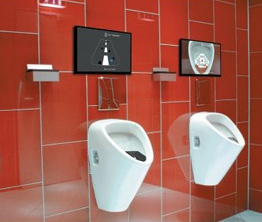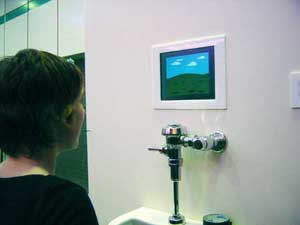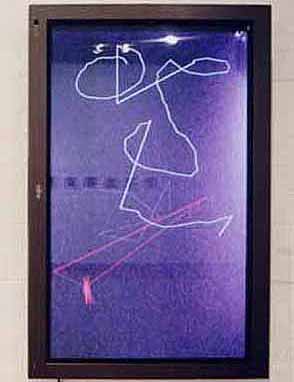
When relieving yourself into this interactive urinal, you launch a mini-game that focuses on a target, with your stream acting as the input device. By targeting a specific area, you are prompted to control a character or object on the screen. In addition, the benefit of this interactive urinal is that people now really focus on hitting the urinal and not outside, as Neundörfer explains:
The reduced size of the “target” improves restroom hygiene and saves on cleanings costs (like the “fly in the urinal” at Amsterdam’s Schiphol Airport). It also makes a trip to the urinal “fun and games” – more than just a necessary nuisance.
We now wonder why Nintendo spent so much money on designing a freehand controller when every man already has a revolutionary controller.
Story from teamxbox
The You’re In Control (Urine Control)

An MIT project from a few years ago, ‘You’re In Control’ system uses computation to enhance the act of urination. Sensors in the back of a urinal detect the position of impact of a stream of urine, enabling the user to play interactive games on a screen mounted above the urinal.
See Video
Pissoir

Allan Giddy and Steven Greenwood , in 2002 used pre-existing urinals in a gallery toilet sensitised to allow participants (both male & female) to draw using their urine. As the urine passes through a light field it is tracked by computer. The resulting line drawings are traced life-size in real-time on monitors in an adjacent gallery space. The colour of each line drawing is determined by the pH value of the drawer’s urine. Each completed drawing is then uploaded automatically onto a website. This work celebrates the private, intimate, DIY act of urination as a creative activity. It provides all participants with, as it were, a canvas, giving them the opportunity to draw/paint their own works of art. Urine incident upon a sensor is sampled for its unique pH level, giving each participant the chance to leave his/her own colour pH signature for the first time.



0 comments:
Post a Comment